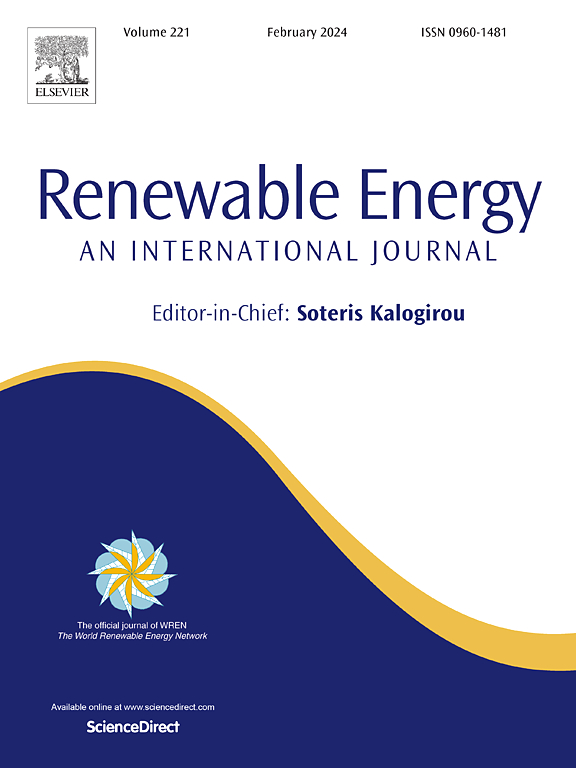地下储氢:在枯竭储层中优化清洁能源储存的氢反应性和孔隙动力学的见解
IF 9
1区 工程技术
Q1 ENERGY & FUELS
引用次数: 0
摘要
地下储氢(UHS)是一种新兴的清洁能源解决方案,特别是在枯竭的油气储层中。这些地层通常含有不同数量的碳酸盐,然而现有的研究报告了它们与氢的反应性的矛盾结果。本研究通过对低(2.8 MPa, 28°C)和高(12 MPa, 70°C)压力-温度条件下的氢-岩相互作用进行长达180天的长期实验研究,解决了这些不一致之处。通过XRD, ICP-OES, SEM和CT成像,我们观察到富碳酸盐样品中有限的矿物反应性,最多有~ 1%的方解石溶解和~ 1%的镁辉石沉淀。尽管元素变化很小,但在10天内,高达25%的氢损失发生了,这表明物理和化学相互作用在起作用。值得注意的是,CT扫描显示孔隙度增加了63%,扫描电镜证实了明显的孔隙变化。对比N2对照实验证实,在高水岩比条件下,氢比反应性在矿物蚀变和气体损失中起主导作用。这些发现提供了新的证据,尽管在标准条件下碳酸盐矿物对氢基本上是惰性的,但高W/R环境会显著影响氢的损失和储存性能。这项工作为含碳酸盐地层的长期储氢机制提供了新的见解,有助于设计更安全、更高效的UHS系统。本文章由计算机程序翻译,如有差异,请以英文原文为准。
Underground Hydrogen Storage: Insights into hydrogen reactivity and porosity dynamics for optimizing clean energy storage in depleted reservoirs
Underground Hydrogen Storage (UHS) is an emerging clean energy solution, particularly in depleted oil and gas reservoirs. These formations often contain varying amounts of carbonates, yet existing studies report contradictory findings on their reactivity with hydrogen. This study addresses these inconsistencies through long-term experimental investigations of hydrogen–rock interactions under both low (2.8 MPa, 28 °C) and high (12 MPa, 70 °C) pressure-temperature conditions, across varying water saturation levels, for up to 180 days. Using XRD, ICP-OES, SEM, and CT imaging, we observed limited mineral reactivity in carbonate-rich samples, with a maximum of ∼1 % calcite dissolution and ∼1 % gupeiite precipitation. Despite minimal elemental variation, up to 25 % hydrogen loss occurred within 10 days, suggesting physical and chemical interactions at play. Notably, CT scans revealed up to 63 % porosity increase, with SEM confirming significant pore alteration. Comparative N2 control experiments confirmed that hydrogen-specific reactivity, especially under higher water-to-rock ratios, plays a dominant role in mineral alteration and gas loss. These findings provide new evidence that, while carbonate minerals are largely inert to hydrogen under standard conditions, high W/R environments can significantly influence hydrogen loss and storage performance. This work delivers novel insights into long-term hydrogen retention mechanisms in carbonate-containing formations, helping inform the design of safer and more efficient UHS systems.
求助全文
通过发布文献求助,成功后即可免费获取论文全文。
去求助
来源期刊

Renewable Energy
工程技术-能源与燃料
CiteScore
18.40
自引率
9.20%
发文量
1955
审稿时长
6.6 months
期刊介绍:
Renewable Energy journal is dedicated to advancing knowledge and disseminating insights on various topics and technologies within renewable energy systems and components. Our mission is to support researchers, engineers, economists, manufacturers, NGOs, associations, and societies in staying updated on new developments in their respective fields and applying alternative energy solutions to current practices.
As an international, multidisciplinary journal in renewable energy engineering and research, we strive to be a premier peer-reviewed platform and a trusted source of original research and reviews in the field of renewable energy. Join us in our endeavor to drive innovation and progress in sustainable energy solutions.
 求助内容:
求助内容: 应助结果提醒方式:
应助结果提醒方式:


